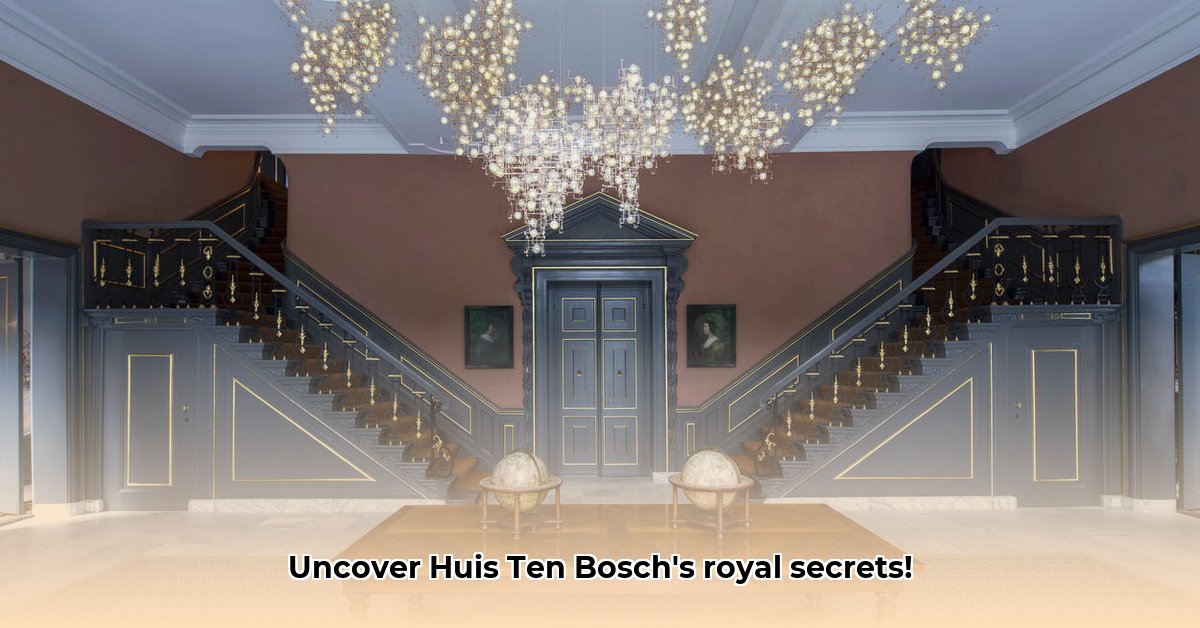
From Humble Beginnings to a Royal Residence: A Story of Expansion and Elegance
Paleis Huis ten Bosch (Palace House in the Woods), nestled within Den Haag's picturesque Haagse Bos, is more than just a building; it's a living testament to Dutch royalty and architectural evolution. Initially conceived in 1645 as a modest summer residence, its journey reflects the ever-shifting landscape of the Dutch monarchy. Architect Pieter Post's initial design, infused with Italianate elegance, laid the foundation. However, over the centuries, the palace grew organically, with architects such as Daniel Marot adding significant extensions and embellishments. The magnificent Oranjezaal (Orange Hall), replete with masterpieces from the Dutch Golden Age, stands as a prime example of this expansion—a testament to the palace's artistic significance. This evolution from a simple summer house to a grand royal palace is a compelling narrative in itself, showcasing the changing tastes and power dynamics of successive Dutch monarchs. What initially began as a relatively unassuming structure has grown into a national icon, don't you think?
Centuries of Royal Life: Echoes Within the Walls
By 1815, Huis ten Bosch had become the official residence of the Dutch Royal Family. Generations of monarchs, from kings and queens to princes and princesses, have left their indelible mark on the palace. Imagine the countless family gatherings, the pivotal decisions made within its walls, the quiet moments of reflection, and the joyous celebrations—all contributing to the rich tapestry of its history. The palace isn't merely a collection of stones; it is a repository of memories, encapsulating the lives and experiences of those who have called it home. The sheer longevity of its use as a royal residence is striking, isn't it? A continuous 200+ year history of royal inhabitation is quite remarkable.
Wartime Scars and Triumphant Restoration
The ravages of World War II inflicted deep wounds upon the palace. Like countless other historical structures across Europe, Huis ten Bosch suffered damage, serving as a stark reminder of conflict's destructive power. However, the palace, like the Dutch spirit, showed remarkable resilience. Between 1950 and 1981, an extensive restoration project breathed new life into the building. This wasn't merely a repair effort; it was a revival, a powerful symbol of the Dutch people's commitment to preserving their cultural heritage. This meticulous restoration perfectly illustrates the significant cultural value assigned to the palace by the Dutch nation. This is a testament to their dedication and national pride, wouldn't you agree?
Beyond the Royal Family: A National Icon
While serving as the primary residence of the Dutch Royal Family, Huis ten Bosch has played a crucial role in Dutch national history. Few know that the First World Peace Conference of 1899 was held within its walls, highlighting its significance beyond the confines of royal life. This serves as a potent reminder of the palace's wider historical significance, its role extending far beyond the private sphere. It stands not just as a royal home but as a prominent symbol of Dutch national identity, a place of significant historical events.
Preserving a Legacy for Future Generations
Today, King Willem-Alexander and Queen Máxima, along with their family, reside in Huis ten Bosch, continuing a royal tradition spanning centuries. Yet, the future of this iconic building demands attention. Ongoing preservation efforts are crucial, necessitating a concerted approach to maintenance, sustainable practices, and, perhaps, exploring increased public engagement through carefully managed access strategies. Protecting this national treasure is intrinsically linked to preserving Dutch culture and heritage for generations to come. What better way to ensure the palace's future than through responsible stewardship and informed public awareness?
A Harmonious Blend of Architectural Styles and Royal Traditions
The evolution of Huis ten Bosch showcases a fascinating interplay between architectural styles and the evolving needs of the Dutch monarchy. From a modest summer home to a grand royal residence, the palace stands as a testament to the lasting influence of both. Its architectural journey truly mirrors the shifting artistic sensibilities and the changing power structures of the Dutch monarchy over the past centuries.
Key Figures in the Palace's History
| Name | Role | Contribution |
|---|---|---|
| Pieter Post | Architect (Initial Design) | Designed the original summer residence. |
| Daniel Marot | Architect (Expansions) | Significantly enlarged and redesigned the palace. |
| Amalia van Solms | Early Resident (Countess of Hanau) | Shaped the palace's early character and development. |
| Jacob van Campen | Architect (Contemporary Influence) | His style likely informed design elements, although not directly involved. |
Securing Huis ten Bosch's Future: A Multi-Faceted Approach
The preservation of Huis ten Bosch requires a holistic strategy encompassing multiple facets:
- Continuous Maintenance: Regular inspections and prompt repairs are essential to prevent minor issues from escalating into major, costly problems.
- Robust Security Measures: Protecting such a significant national landmark necessitates advanced and continually updated security systems to mitigate potential risks.
- Sustainable Practices: Adopting eco-friendly maintenance techniques demonstrates a commitment to environmental responsibility and ensures the palace's long-term sustainability.
- Considered Public Engagement: Exploring possibilities for increasing public awareness, such as limited tours or virtual experiences (when feasible and appropriate), can foster appreciation for this cultural gem.
The story of Paleis Huis ten Bosch is an ongoing narrative, a captivating blend of royal history and architectural brilliance. Its future preservation ensures that this remarkable palace continues to stand as a powerful symbol of Dutch heritage for generations to come.